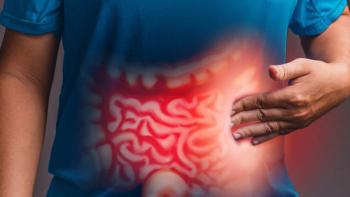
- MPN Special Issue 2023
- Volume 22
- Issue 03
Diet May Impact Symptom Burden in Myeloproliferative Neoplasms
Patients with MPNs should consult with their treating physician to individualize a healthy, nutritious diet to help ease symptoms.
Many patients with myeloproliferative neoplasms (MPNs) experience a heavy symptom burden due to the disease and its treatments, including weight fluctuation, inflammation and nausea. A nutritious diet, however, may help ease these symptoms, according to Doris Piccinin, a registered dietitian in the Department of Patient and Family Services at Abramson Cancer Center of the University of Pennsylvania in Philadelphia.
Piccinin emphasized that the diet needs to be individualized to the patient based on their needs and the symptoms they’re experiencing.
“I think we have to look at each and every patient, and no one diet fits all,” Piccinin said in an interview with CURE®. “What we might think of as a healthy, clean diet, we might have to put on the back burner, depending on what’s going on with the patient.”
Tips for Patients With Weight Loss, Abdominal Pain
Piccinin noted that 30% of patients with MPNs going through active treatment experience weight loss. It is important that these patients do not lose a significant amount of weight because that can lead to loss of muscle mass. And strong muscles, she explained, can help maintain an effective immune system as well as help patients tolerate treatment and remain physically active.
Abdominal pain is another factor that sometimes contributes to weight loss. Piccinin explained that patients with MPNs often have a feeling of fullness because their spleen may be enlarged and pressing against part of their digestive tract or because of abdominal blood clots.
She asks patients to weigh themselves three times a week, and if they’re losing weight she recommends that they begin recording everything they eat to ensure they’re meeting their daily calorie and protein goals. Specifically, she advises that they incorporate a protein as the center of their meals and build on the calories with healthy fats.
If they cannot eat a full meal, peanut butter and crackers, full-fat yogurt or a high-calorie, high-protein shake several times per day can be used to replace meals. She suggests aiming for six to eight mini meals per day if they’re feeling bloated or having difficulty meeting their nutritional needs.
“If (a patient) has lost a significant amount of weight, this may lead to dose reductions of treatment medi- cations or cause a delay in treatment, emphasizing the importance of weight maintenance throughout treatment,” she said.
For those looking to add healthy calories to their diet, Piccinin recommends:
- Smoothies.
- Soups.
- Avocados.
- Yogurts (full fat or low fat,
- depending on patient needs).
Easing Other Symptoms
For some patients, a healthy diet might include foods that are high in fiber; however, for those experiencing mouth sores due to treatment, high-fiber foods can cause discomfort. For these patients, Piccinin recommends:
- Hot cereals like oatmeal, cream of wheat or cream of rice; you may need to cool them down before eating.
- Puddings, yogurts, ice cream or shakes.
- Flaked white fish with butter and small white beans, mashed.
- Canned turkey, chicken or tuna fish with mayonnaise or avocado to moisten.
- Softer foods such as mashed potatoes and meatloaf with gravy.
- Cream-based soups.
- Pastina pasta cooked with eggs and ricotta cheese.
For patients experiencing diarrhea during treatment, she recommends restricting lactose or using soluble fiber such as:
- Oatmeal.
- Barley.
- White rice.
- Bananas.
- Applesauce.
It is important to drink plenty of fluids if diarrhea is severe, and electrolyte replacement beverages may be needed for some patients.
Piccinin also mentioned that ginger can be incredibly helpful to patients experiencing nausea. Adding ginger to a smoothie or tea can increase gastric emptying, limiting nausea and bloating. In addition, foods prepared at room temperature may be better tolerated because odors can worsen nausea. She noted that eating dry toast or crackers as the first food of the day may help prevent nausea and that waiting one hour after eating to drink fluids may help prevent stomach upset. She also suggests avoiding fried foods and spicy, acidic foods as well as limiting the amount of added fat to better control nausea.
Piccinin concluded that patients should talk to their doctor for a referral to a registered dietitian to find a diet that works best for them. She said the Academy of Nutrition and Dietetics can help patients find a registered dietitian in their area and, the Leukemia & Lymphoma Society offers nutrition resources on their website as well.
For more news on cancer updates, research and education, don’t forget to
Articles in this issue
over 2 years ago
Strategies for Improving Life With a Chronic Diseaseover 2 years ago
Adjusting to Cancer Togetherover 2 years ago
4 Steps to a Delicious, Healthy Smoothie for Cancer Survivorsover 2 years ago
One Step Closer to an MPN Cureover 2 years ago
Novel Approaches Create a Bridge to Transplant in MPNs



